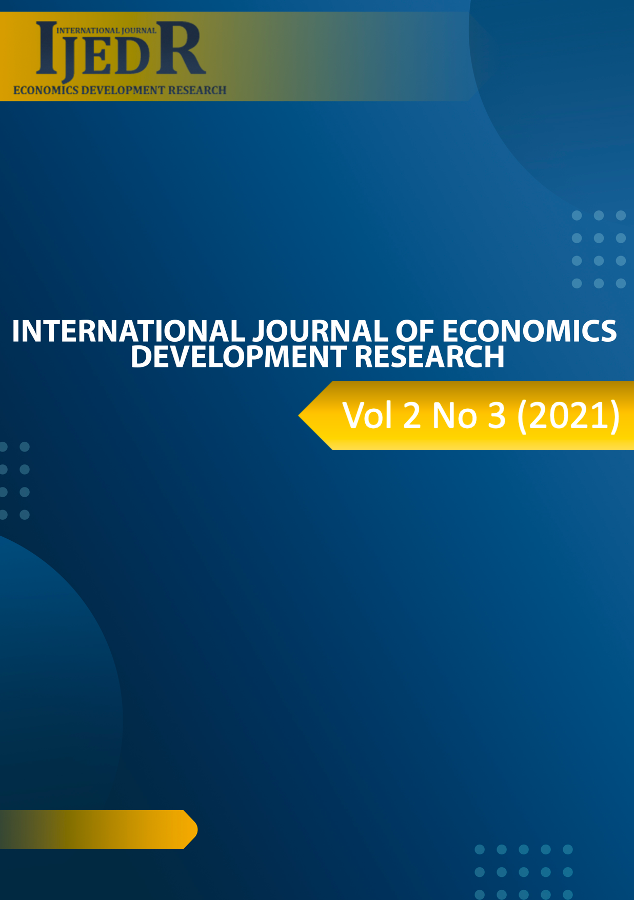The Effect of Third-Party Funds, Capital Adequacy Ratio, Casa Ratio, Bi Rate, And Inflation Towards The Distribution of Credit Banking in Indonesia
DOI:
https://doi.org/10.37385/ijedr.v2i3.282Keywords:
Distribution of Credit Banking, BI Rates, CAR, CASA, Inflation, Third Party FundsAbstract
This research aims to determine the effect of internal and external factors on bank lending. The independent variables analyzed were Third-Party Funds (DPK), Capital Adequacy Ratio (CAR), CASA ratio, BI rates, and inflation. While the dependent variable in this study is bank credit distribution. This research was conducted by taking secondary data through the publication of Bank Indonesia (www.bi.go.id), the Financial Services Authority (www.ojk.go.id), and Bureau Van Dijk (www.orbis.bvdinfo.com). The population in this study are banks listed on the Indonesia Stock Exchange (IDX). A sampling of this study was conducted using the purposive sampling method, which amounted to 15 banks with the largest assets in Indonesia in 2018. The research period used is based on annual banking reports, 2011-2018. This research is a quantitative study using the FEM (Fixed Effect Model) method. The results of this research indicate that the variable of Third-Party Funds, Capital Adequacy Ratios, CASA ratio, and Inflation is significantly effective towards the distribution of credit banking partially. On the other hand, the variable BI rate is not significantly effective to the distribution of credit banking. Meanwhile, DPK, CAR, CASA, BI rates, and inflation simultaneously have a significant effect on the distribution of credit banking.
References
Fahmi, I. 2015. Manajemen Perbankan Konvensional Dan Syariah. Jakarta: Mitra Wacana Media.
Indonesia, Bank. 1998. Undang-Undang Republik Indonesia No. 10, Tahun 1998 Tentang Perbankan (Perubahan Atas Undang-Undang No. 7, Tahun 1992. Jakarta.
Indonesia, Bank. 2004. Surat Edaran No.6/23/DPNP. Jakarta.
Indrajaya, Danang. 2019. “The Influence of Profitability and Solvency Ratios on Stock Prices with Inflation as Moderating Variable (Case Study on BUMN).” International Journal of Technology And Business 3(2):1–10.
Jusuf, J. 2014. Analisis Kredit Untuk Credit (Account Officer). Jakarta: Gramedia Pustaka.
Kasmir. 2008. Bank Dan Lembaga Keuangan Lainnya. Jakarta: PT. Raja Grafindo Persada.
Maulidizen, Ahmad. 2018. “Literature Study on Mur?ba?ah Financing in Islamic Banking in Indonesia.” Economica: Jurnal Ekonomi Islam 9(1):25–51.
Rawani, A. 2014. What Is Casa Ratio?
Sekaran, U. 2007. Metode Penelitian Untuk Bisnis. Jakarta: Salemba Empat.
Sugiyono. 2017. Metode Penelitian Kuantitatif, Kualitatif, Dan Kombinasi (Mixed Methods). Bandung: Alfabeta.





